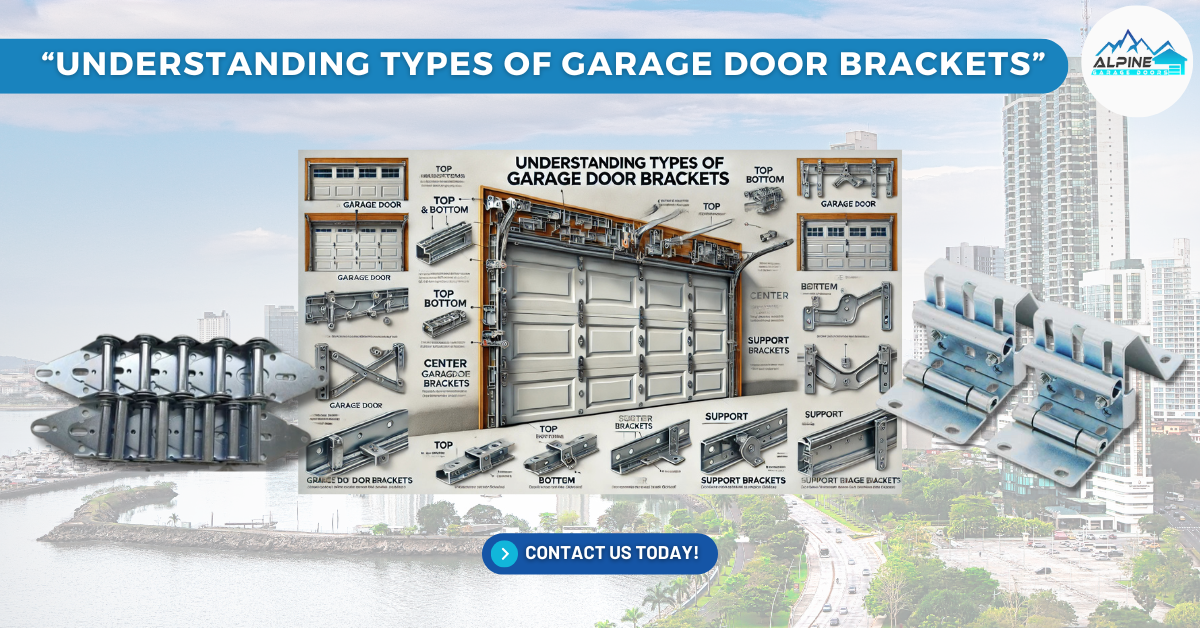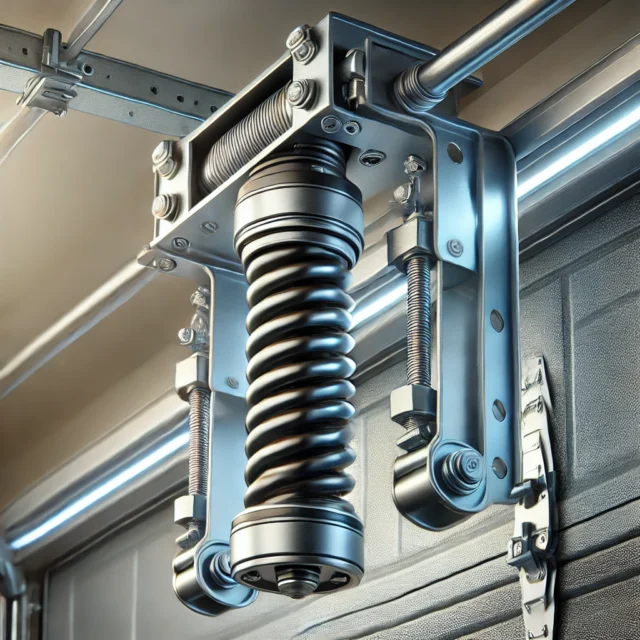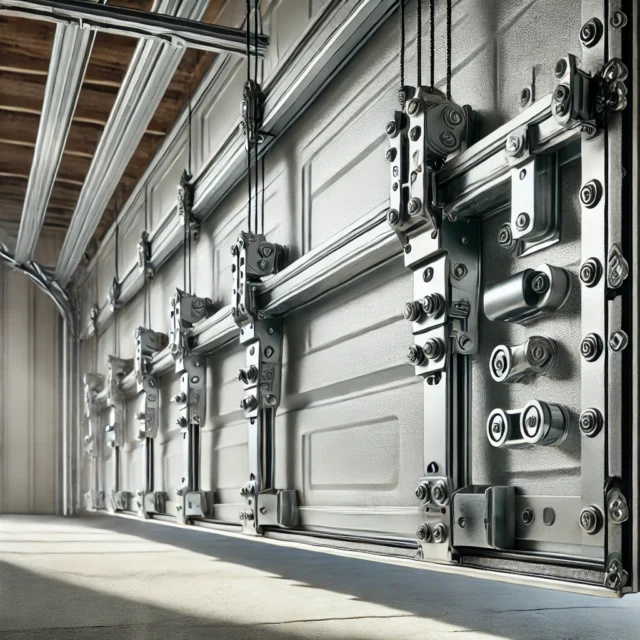Ever had your garage door unexpectedly jam, make strange noises, or fail to close properly? Surprisingly, small parts like garage door brackets could be the culprit! These often-overlooked components play a big role in your garage door’s safety, reliability, and overall performance. Whether you’re considering a garage door replacement, garage door repair in Texas, or a fresh installation, understanding the types of garage door brackets is key to making informed choices and avoiding unexpected repairs.
In this guide, we’ll take a deep dive into the world of garage door brackets, breaking down their types, functions, and why they matter. Let’s get started!
What Are Garage Door Brackets, and Why Do They Matter?
Garage door brackets are the metal connectors that secure critical parts of the door, like the panels and tracks, allowing it to open and close smoothly. Think of them as the “connectors” that hold everything in place. Without well-functioning brackets, your garage door could become unstable, noisy, or even dangerous.
Brackets play a unique role in both residential and commercial garage door systems by:
- Stabilizing Movement: Ensuring the door’s safe and steady travel up and down.
- Maintaining Alignment: Preventing misalignment that can lead to costly repairs.
- Absorbing Pressure: Especially important in Texas, where doors endure extreme heat, rain, and high winds.
Knowing the types of garage door brackets and their specific roles can be a game-changer, especially if you need emergency garage door repair. Let’s dive into the different types and their functions.
Types of Garage Door Brackets Explained
 End Brackets
End Brackets
End brackets are located at the end of each garage door track, securing it firmly to the wall or ceiling. These brackets provide critical support to the door’s path, ensuring stability as it moves. If end brackets loosen or shift, you might notice your door shaking or straining, which can wear down other components. Properly maintained end brackets are vital, especially for smooth garage door opener repair and operation.
 Center Brackets
Center Brackets
Center brackets, also known as torsion spring brackets, hold the garage door’s torsion springs in place. Torsion springs are under extreme tension, so a damaged or misaligned center bracket can create serious issues, including potential safety hazards. Because of the danger associated with spring tension, any garage door spring repair or center bracket adjustment should always be handled by professionals.
 Flag Brackets
Flag Brackets
Flag brackets are typically positioned near the top of the door track. They work alongside end brackets to stabilize the track alignment, ensuring the door moves up and down without veering off course. Flag brackets are especially crucial during garage door installation, as improper placement can lead to ongoing alignment issues that impact performance.
 Bottom Brackets
Bottom Brackets
Located at the bottom corners of the garage door, bottom brackets connect the door to the lifting cables. These brackets anchor the cables that create the tension required to lift and lower the door. Bottom brackets are under constant strain, so they’re a common source of wear and tear. If you’re facing issues with the door lifting unevenly or a cable snapping, a garage door replacement or repair professional will likely inspect these brackets first.
How to Tell When Your Garage Door Brackets Need Attention
In Texas, where garage doors face unique challenges like high humidity, extreme heat, and sometimes high winds, garage door brackets are prone to faster wear. Here are some telltale signs that your garage door brackets may need attention:
- Unusual Noises: Grinding, rattling, or screeching sounds often indicate that the brackets are loose or out of alignment.
- Misalignment or Gaps: If the door looks uneven, or if you can see gaps where the door meets the frame, a damaged or misaligned bracket could be the cause.
- Vibration or Wobbling: Brackets under pressure can cause the door to shake or move unevenly during operation, which can lead to premature wear on other parts.
If you notice any of these issues, it’s time to schedule a checkup with Alpine Garage Doors Texas. Ignoring bracket problems can lead to bigger repairs down the line, so a quick call could save you money and hassle!
When to Inspect and Replace Garage Door Brackets
Perform a visual inspection of your garage door brackets at least every six months. Regularly checking for rust, looseness, and unusual wear can prevent small issues from turning into big problems. Here’s a quick checklist for DIY inspections:
- Check for Rust and Corrosion: Texas humidity and rain can quickly lead to rust buildup on metal brackets, compromising their integrity.
- Test for Loose Screws or Fasteners: Gently tug on each bracket to see if it moves. If you notice any give, it’s best to call in a professional for adjustment.
- Look for Visible Damage: Dents or visible bending indicate that a bracket may need replacement.
For any adjustments involving springs, cables, or high-tension components, always seek help from a professional garage door service like Alpine Garage Doors Texas. DIY fixes can be risky, especially for torsion spring or bottom bracket repairs.
FAQs About Garage Door Brackets
Q: Can I replace garage door brackets myself?
A: While DIY adjustments on loose screws or minor alignment issues are safe, replacing brackets connected to springs or cables should always be done by a professional to avoid injury.
Q: How much does it cost to replace garage door brackets?
A: Costs vary depending on the type of bracket and repair complexity. For a free, customized quote, reach out to Alpine Garage Doors Texas.
Q: How do I know if my brackets need replacing versus repair?
A: If brackets are visibly damaged, rusted, or causing alignment issues, they likely need replacing. A professional inspection can confirm the best course of action.
Q: What type of bracket is best for insulated garage doors?
A: Insulated doors, heavier than standard models, benefit from heavy-duty or reinforced brackets, which can better handle the weight without strain.
Conclusion
Garage door brackets might be small, but they’re crucial for your door’s safe, smooth operation. Each bracket—from the end bracket that stabilizes the track to the bottom bracket responsible for lifting—plays a key role. Without well-functioning brackets, garage doors in Texas would struggle to handle the unique stresses of local weather, like high winds and humidity. Regularly inspecting and maintaining these components can save you from costly repairs, whether it’s emergency garage door repair or standard maintenance.
If you’re noticing signs that your brackets may need attention or if it’s been a while since your last inspection, reach out to Alpine Garage Doors Texas. With our expert team and extensive service areas across Texas, including Austin, Dallas, Houston, and San Antonio, we’re ready to provide residential and commercial garage door repair, replacement, and installation. Our knowledgeable technicians can ensure that every bracket, spring, and opener in your garage door system is in top shape.
Need garage door assistance? Contact Alpine Garage Doors Texas today for a free inspection or consultation. Let’s make sure your garage door is reliable, safe, and ready to handle whatever Texas weather brings next!


 End Brackets
End Brackets Center Brackets
Center Brackets Flag Brackets
Flag Brackets Bottom Brackets
Bottom Brackets